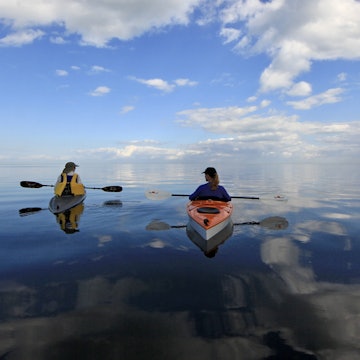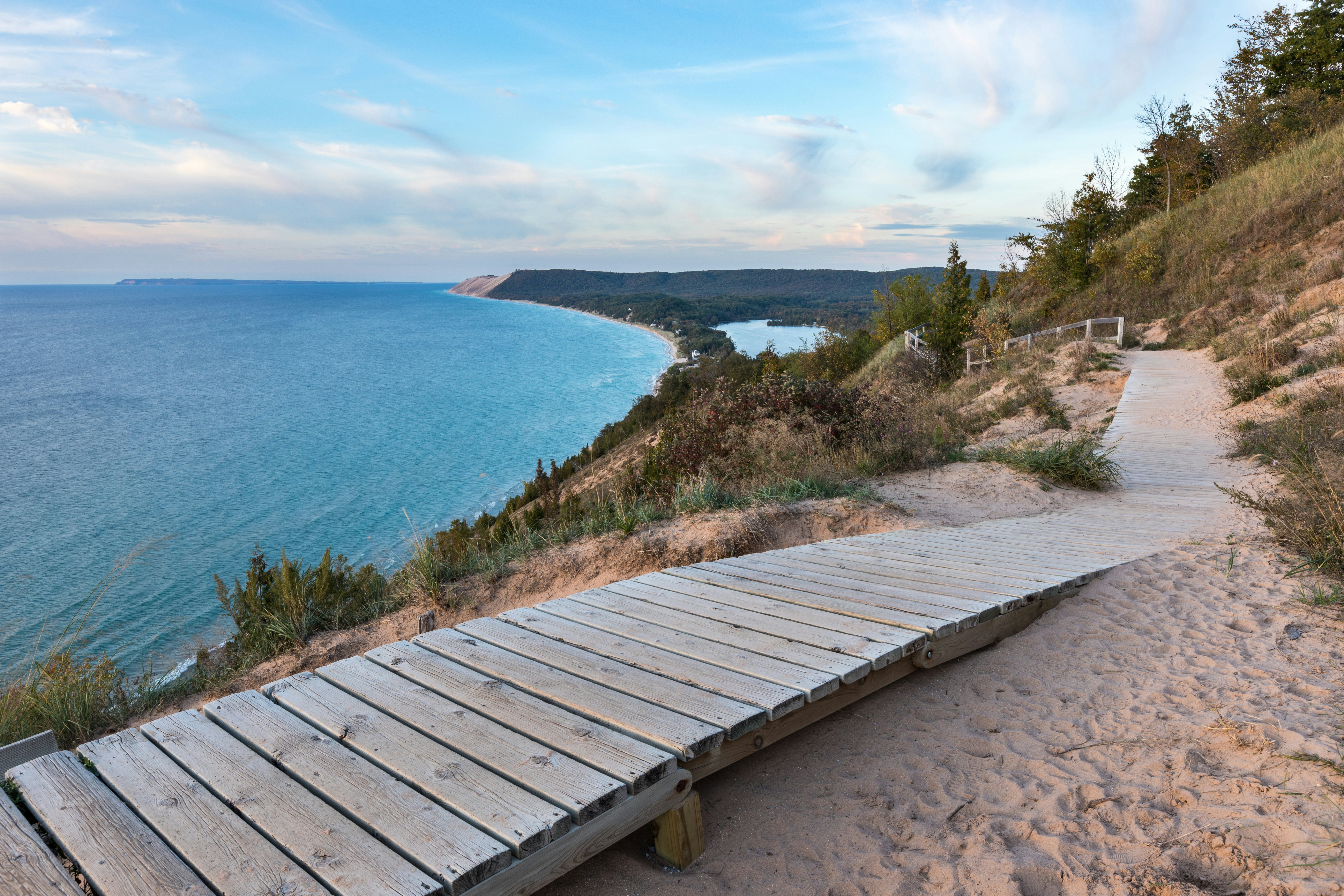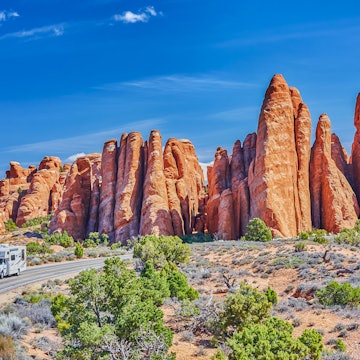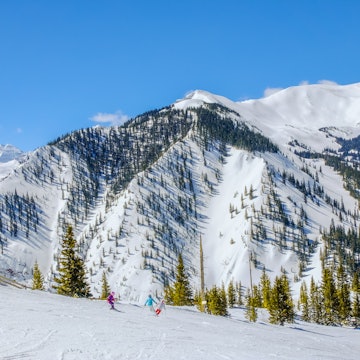

The beaches along Sleeping Bear Dunes National Lakeshore are some of the best in the northern USA © Amanda Bradford / EyeEm / Getty Images
The names of Michigan’s national parks may not roll off the tongue like some of the more famous parks of the American West – in fact, Isle Royale National Park is one of the least-visited places in the USA’s portfolio of treasures – yet those who head north for nature are rewarded with rugged quiet, pristine wilderness and decidedly fewer crowds.
The unspoiled coasts of Michigan’s Lake Superior and Lake Michigan harbor two of America’s three national lakeshores. Elsewhere, travelers are tempted with scenic solitude on an isolated island, War of 1812 nostalgia and copper-mining-related heritage, among other lesser-known gems.
These are the best national parks in Michigan. And you’ve probably never heard of them.

1. Pictured Rocks National Lakeshore
Best national park for nature
America’s first national lakeshore, Pictured Rocks National Lakeshore along the shores of Lake Superior harbors a cavalcade of natural wonders. The Upper Peninsula park’s namesake yellow sandstone cliffs and caves are awash with green and blue minerals, which form a kaleidoscopic spectrum that perhaps is best appreciated as you paddle by in a kayak.
Filling out the natural offering here are colorful caverns, picturesque waterfalls, imposing rock archways and dramatic rock and cave formations, all of which embark on color-shifting journeys as the sun – and seasons – change.
Can’t-miss attractions within the park include Grant Portal Point, where Lake Superior’s azure waters collide with the park’s namesake cliffs; Spray Falls, where a 70-foot long cascade plunges from cliffs into the lake below; and Miners Castle, an erosion-created rock formation that counts itself the park’s most famous landmark (despite one of its “turrets” having tumbled into the drink in 2006). All of these sights can be reached by boat or from the park’s 100 miles of hiking trails.
Facilities, including hotels, restaurants and one of two visitor centers, are concentrated in the park’s western gateway in Munising.

2. Sleeping Bear Dunes National Lakeshore
Best national park for beach bums
Michigan’s other federally designated stretch of coast, Sleeping Bear Dunes National Lakeshore preserves 35 miles along the northern end of Michigan’s 300-mile western shoreline, an area appropriately christened the Gold Coast. This cornucopia of sandy beaches, towering dunes, lush forest and inland lakes includes some 70,000 acres of protected wilderness.
While there’s no shortage of strenuous activity to engage in here – including slogging up 300ft-tall sand dunes, paddling down rivers and hiking 100 miles of designated trails – the 14 sun-kissed beaches are the best-known attractions.
Stretches of golden sands yield to cerulean lake waters at spots such as Esch Road Beach, Peterson Road Beach, Platte River Point Beach and Tiesma Road Beach, all some of the northern USA’s top shores. Additional distractions include lake islands (South Manitou and North Manitou), cute beach towns, wildly scenic drives and lost-in-time logging villages.
Facilities within the park boundaries include four campgrounds (two on the islands), a visitor center, a bookstore and a general store. Traverse City, the biggest city in the vicinity of the park, is located 28 miles east of the park and makes for an excellent base for day trips.

3. Isle Royale National Park
Best national park for wildlife
With the exception of a few very remote national parks in Alaska, Isle Royale National Park, a 210-sq-mile island floating in Lake Superior accessible by ferry or seaplane, is the least-visited preserve in the National Park Service’s portfolio. But don’t let that discourage you: quiet things come to those who seek out hidden gems.
First and foremost, Isle Royale is car- and road-free – the only traffic jam you’re likely to encounter is one of the island’s 1600 moose blocking the path during your hike. Over 165 miles of trails pepper the pristine wilderness here, including the park’s crown jewel, the 43-mile Greenstone Ridge Trail. Expect wildlife encounters with the aforementioned moose as well as numerous bird species, beavers, otters, snakes and even wolves.
Services in the park are expectedly restrained. You’ll need properly packed kit (tent, camping stove, sleeping bag, food and water filters, etc) for overnighting in the park’s rustic campgrounds – unless you opt for the lone accommodations at Rock Harbor Lodge, whose facilities include two restaurants.
Transport options for venturing out this way include a six-hour ferry ride from Houghton (or three hours from Copper Harbor) or a 35-minute seaplane flight from Hancock. Whichever you choose, expect an adventure of majestically minimalist proportions.
4. River Raisin National Battlefield Park
Best national park for history buffs
One for historical war enthusiasts 38 miles southwest of Detroit, River Raisin National Battlefield Park preserves and commemorates a major site from the War of 1812. In January 1813, British and Indian forces obliterated American troops here in one of the war’s bloodiest battles, prompting the emotional rallying cry, “Remember the Raisin!” Only 33 American soldiers out of 1000 eluded death or capture here, a site that was awarded national-park status in 2010.
In addition to the solemn battlefield and visitor center, the park’s eight miles of paved hike-bike trails connect historic sites, preserved parklands, historic buildings and ecological features (you might well meet a muskrat). But more than nature, River Raisin is about history and remembrance.

5. Keweenaw National Historical Park
Best national park for heritage
Michigan’s most unusual national park doesn’t only count pristine wilderness, dramatic geographic formations or travel-worthy flora and fauna among its attributes. Instead, Keweenaw National Historical Park preserves the cultural heritage of the once-thriving copper industry.
The Keweenaw Peninsula was once the world’s greatest producer of copper. Located in and around the Upper Peninsula town of Calumet, the park consists of a series of 22 independently operated heritage sites that document the rise, domination and fall of a 7000-year-old mining industry.
Heritage sites in the area include numerous museums, cultural centers and mining sites. Other historic points of interest include scenic wooden homesteads and log cabins of Finnish origin as well as two state parks – allowing you to tack on a bit of nature.
















